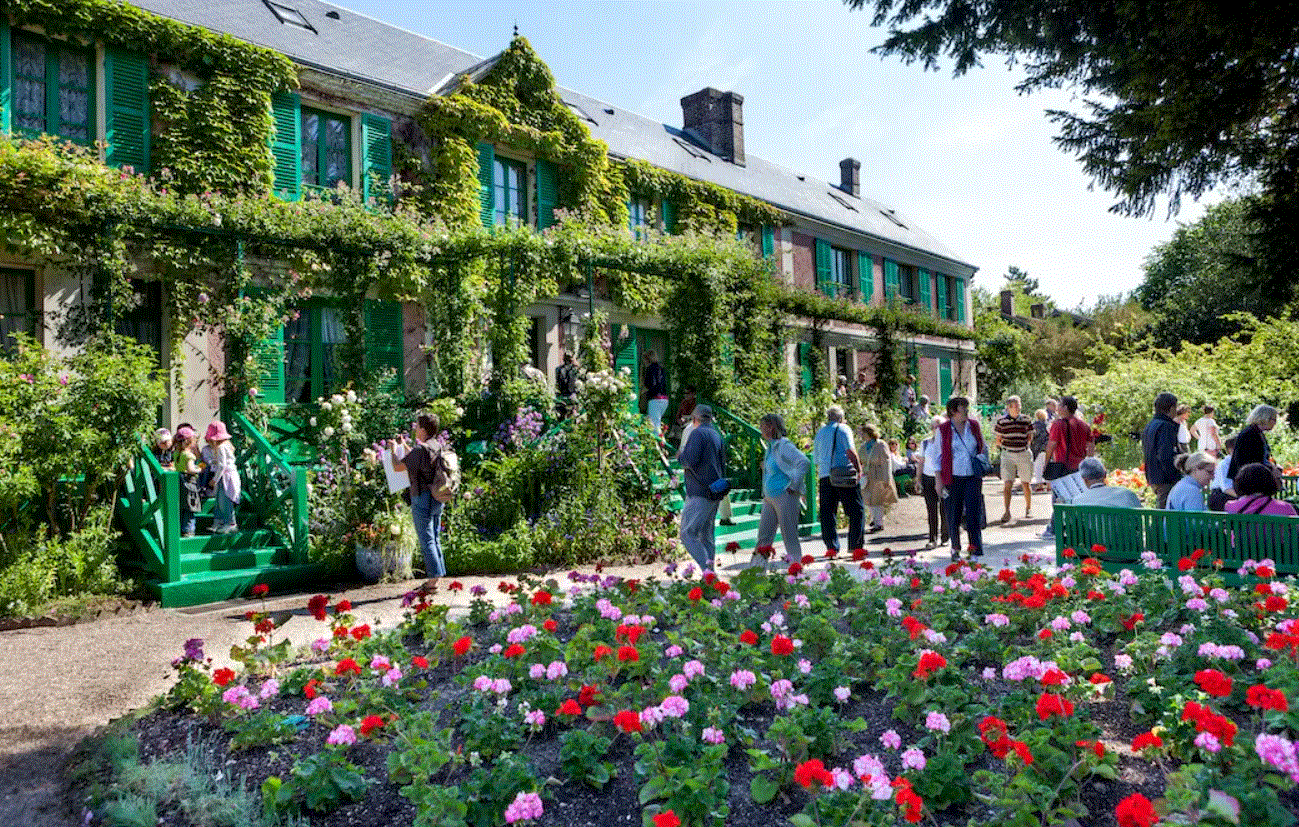Claude Monet’s Giverny Garden: The Inspiration Behind His Masterpieces
Claude Monet, one of the most celebrated Impressionist painters, found his ultimate muse in a place that was much more than just a garden—it was a living, breathing masterpiece. Monet’s Giverny garden, located in the tranquil French countryside, was not only his sanctuary but also the inspiration behind some of his most famous paintings. From the lush foliage to the intricate layout, the garden played a crucial role in Monet’s artistic vision, embodying his fascination with nature and light. This article explores the story of Monet’s Giverny garden, its design, plant selections, and how this vibrant space became the driving force behind his iconic works, such as The Artist’s Garden at Giverny.
The Genesis of Monet’s Giverny Garden
Monet moved to Giverny in 1883, when he was in his early 40s, seeking a peaceful retreat that would allow him to fully immerse himself in his art. The property was an ideal choice, with a large house and an adjacent plot of land that Monet envisioned transforming into a garden that would serve as his personal Eden. Over time, Monet carefully designed the garden, investing in its creation both financially and emotionally. He treated the garden much like his canvases, meticulously planning every detail—from the color schemes to the arrangement of plants.
Initially, Monet began cultivating the garden near the house, which he called the Clos Normand. This area was characterized by lush, vibrant flowerbeds filled with an array of colors. Later, he expanded the garden to include a water garden across the road, featuring the now-iconic lily pond and the Japanese bridge that would become central themes in his later works. These two distinct sections of the garden showcased Monet’s dedication to creating a harmonious blend of structured beauty and natural, free-flowing growth.
The Design and Layout of Monet’s Garden
Monet’s garden was meticulously designed, combining formal and informal elements that reflected his artistic sensibilities. The Clos Normand, located directly in front of his house, featured a traditional French garden layout with straight pathways, geometric flowerbeds, and arches draped in climbing roses. However, Monet broke from convention by filling these structured spaces with an explosion of wildflowers, creating a dynamic and colorful scene that mimicked the impressionistic style of his paintings.
The water garden, in contrast, was inspired by Monet’s fascination with Japanese art and culture. This section was characterized by winding paths, a central pond filled with water lilies, and a series of Japanese-style bridges painted in bright green. The water garden’s asymmetrical design, with its reflective surfaces and lush greenery, provided an ever-changing canvas that captured the shifting light and colors of the seasons. It was this section that particularly captured Monet’s imagination, leading him to create some of his most celebrated works.
The Plants that Inspired Monet
Monet’s garden was a carefully curated collection of plants chosen for their color, texture, and ability to evoke emotion. The garden was filled with a variety of flowers, including irises, tulips, daffodils, and peonies. Roses climbed trellises, sunflowers swayed in the breeze, and poppies added bursts of red among the green foliage. Monet’s choice of plants was driven by his desire to create a vivid palette that would change with the seasons, offering endless inspiration for his art.
In the water garden, the focal point was undoubtedly the water lilies. Monet imported various species of these lilies, which he lovingly tended to create the serene pond that would become synonymous with his later works. The lilies’ soft, floating forms and the way they reflected the changing sky fascinated Monet, leading him to paint them repeatedly, capturing their beauty at different times of day and under various weather conditions.
The influence of Japanese aesthetics was also evident in Monet’s choice of bamboo, weeping willows, and wisteria, which complemented the tranquil setting of the water garden. These elements not only provided visual interest but also helped to create a sense of calm and reflection, themes that were central to Monet’s artistic exploration.
Monet’s Garden as a Living Canvas
Monet’s garden was more than just a place of beauty; it was a living canvas that evolved with time, light, and weather. The ever-changing nature of the garden allowed Monet to capture fleeting moments—morning mists, midday sun, and the delicate colors of dusk—each offering a unique perspective that found its way onto his canvases. In works like The Artist’s Garden at Giverny, Monet masterfully depicted the vibrancy of his garden, blending bold colors and dynamic brushstrokes to convey a sense of movement and life.
Monet’s approach to painting his garden was deeply immersive. He often set up his easel outdoors, directly among the flowers and plants. This proximity allowed him to observe the nuances of light and shadow, translating his observations into rich, textured compositions that resonate with viewers. His focus on capturing natural beauty, unaltered and unembellished, became a hallmark of his work, solidifying his place as a pioneer of the Impressionist movement.
The Legacy of Monet’s Giverny Garden
Today, Monet’s Giverny garden remains a testament to the artist’s vision and dedication. It continues to draw visitors from around the world, eager to experience the beauty that inspired Monet’s masterpieces. The garden has been meticulously restored to reflect its appearance during Monet’s lifetime, allowing visitors to step into the artist’s world and see firsthand the scenes that fueled his creativity.
Monet’s garden at Giverny was not merely a backdrop for his work but an integral part of his artistic journey. It was a place where art and nature intertwined, each influencing the other in a continuous dance of light, color, and form. Through his garden, Monet found a wellspring of inspiration that allowed him to push the boundaries of Impressionism, leaving behind a legacy of beauty that continues to captivate and inspire.
Whether viewed in person or through his paintings, the garden stands as a vivid reminder of the profound connection between art and nature, capturing the essence of Monet’s belief that the true beauty of the world lies in the details we often overlook.





